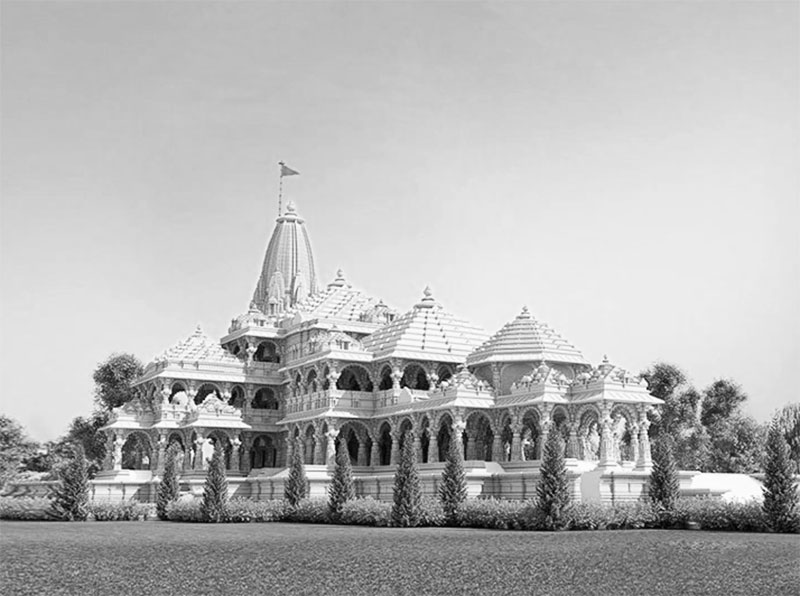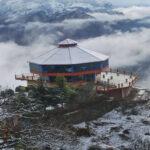10 Essential Facts about the Ayodhya Ram Mandir
As the grand inauguration of Ram Mandir approaches in Ayodhya on January 22, let us delve into significant details about the temple that are essential for you to be aware of.
The upcoming Ram Mandir, which is soon to be inaugurated, is poised to claim the title of the largest temple in India due to its impressive architectural design. The Sompura family, who are credited with the temple’s design, recently disclosed that the plans were originally conceived by Ashish Sompura, the son of Chandrakant Sompura, nearly three decades ago. As per the family, the temple is projected to reach a towering height of approximately 161 ft and will span across a vast area of 28,000 sq ft.
The sacred base: The base of the Ram Mandir carries immense spiritual importance, as consecrated earth from 2587 regions were gathered to construct it. Among the notable locations were Jhansi, Bithoori, Haldighati, Yamunotri, Chittorgarh, Golden Temple, and numerous other revered sites.
The architects: According to the reports, they come from the renowned Sompura family, famous for constructing over 100 temples across the globe, including the esteemed Somnath Temple. Under the guidance of the principal architect Chandrakant Sompura, and with the assistance of his sons Ashish and Nikhil, they have established a timeless heritage in the field of temple architecture that surpasses generations.
According to numerous reports, the construction of the Ram Mandir was exclusively carried out using stones, with no utilization of iron or steel materials.
The bricks utilized in the construction of the Ram Mandir are noteworthy for bearing the sacred inscription ‘Shri Ram.’ This signifies a fascinating connection to an age-old tradition observed during the building of Ram Setu, ensuring heightened resilience and longevity for the contemporary manifestation of these bricks.
Soil from Thailand has been sent as a symbol of international spiritual unity to be used in the consecration ceremony of Ram Lalla on January 22, 2024. This act highlights the enduring impact of Lord Ram’s legacy, transcending geographical borders and resonating universally.
The temple boasts a unique characteristic: It is divided into three floors, encompassing a vast area of 2.7 acres. The ground floor showcases the life of Lord Ram, while the first floor offers visitors an immersive experience in the opulence of Lord Ram’s Darbaar. This section is meticulously crafted using Bansi Paharpur, a pink sandstone sourced from Bharatpur in Rajasthan. The temple itself stretches an impressive length of 360 ft, spans 235 ft in width, and reaches a towering height of 161 ft, including its peak. With its three floors and 12 gates, this architectural marvel stands as a magnificent testament to grandeur.
Reports indicate that the consecration ceremony on August 5th was conducted using the sacred water sourced from 150 rivers spanning across India.
A copper plate engraved with significant details about the temple, Lord Ram, and Ayodhya will be enclosed in a time capsule buried 2000 ft beneath the temple. This act will ensure the preservation of the temple’s identity for future generations.
The temple showcases the Nagar style of architecture, boasting 360 pillars that add to its visual allure and establish it as a remarkable example of architectural finesse.











